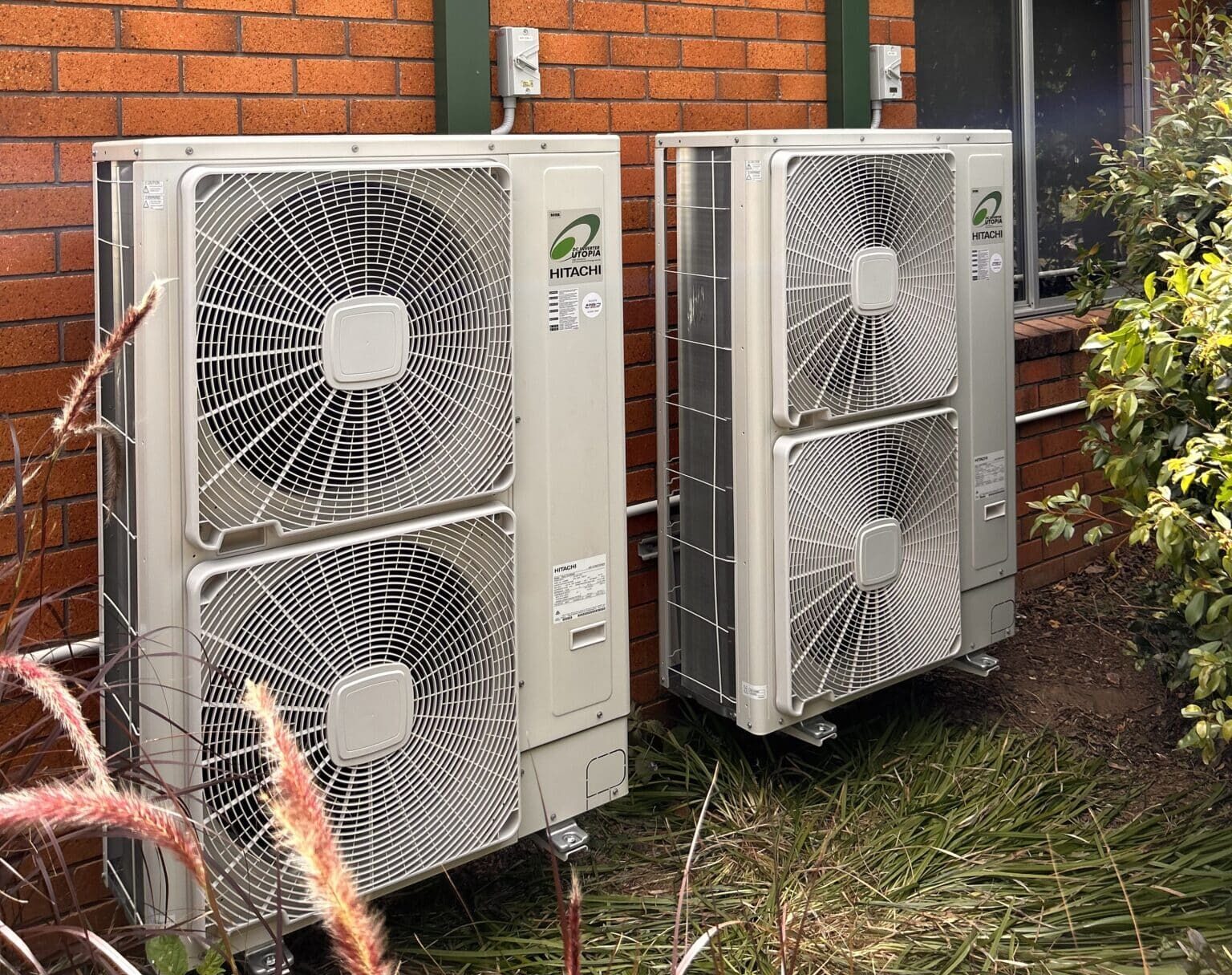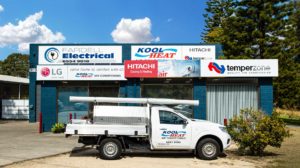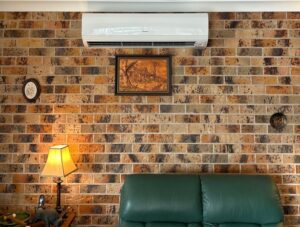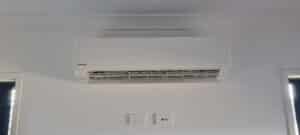Ducted and split system air conditioners are two popular options for cooling and heating homes or businesses.
Ducted systems utilize a network of ducts within the ceiling to distribute air throughout the building. These systems are known for their ability to provide whole-home comfort as they can cool or heat multiple rooms simultaneously. The installation costs of ducted systems can be higher compared to split systems due to the need for ductwork and a central unit. However, they offer a higher level of efficiency, especially for larger spaces.
On the other hand, split systems consist of two main components – a wall-mounted unit inside the room and an external unit located outside the building. These systems are generally more affordable in terms of installation costs and are ideal for cooling or heating single rooms. While they may not offer the same level of centralized control as ducted systems, they can still be efficient and effective in maintaining a comfortable indoor temperature.
Ducted systems have several benefits over split systems. Firstly, they allow for easy zoning, where different areas or rooms within the building can be individually controlled for temperature. Secondly, ducted systems are aesthetically appealing as the entire system is concealed within the ceiling, eliminating the need for bulky wall-mounted units. Additionally, ducted systems provide consistent, even airflow throughout the entire space. They also offer the flexibility of incorporating heating, ensuring comfort in colder months. Other benefits include reduced noise, improved air quality through filtered air circulation, and the potential for energy savings through the ability to control different zones.
In summary, both ducted and split system air conditioners have their unique features and benefits. The choice between the two depends on the specific needs and requirements of the space being cooled or heated.
Benefits of using ducted vs split-system air conditioning
Ducted air conditioning and split-system air conditioning are two popular options for cooling homes and businesses. Each has its own advantages, and the choice between the two depends on individual preferences and requirements.
Ducted air conditioning offers numerous benefits. Firstly, it provides whole-house cooling, as it cools multiple rooms through a network of ducts installed throughout the property. This ensures a consistent and even distribution of cool air, making it ideal for larger spaces. In contrast, split-system air conditioning cools a single room or specific area, making it more suitable for smaller spaces.
When it comes to upfront cost, ducted air conditioning tends to be more expensive as it requires installation of ductwork. However, it offers a greater long-term cost efficiency due to its ability to cool multiple rooms simultaneously, reducing the need for multiple units. Split-system air conditioning, on the other hand, has a lower upfront cost but may require multiple units to cool multiple rooms, resulting in higher long-term costs.
Installation time also differs between the two systems. Ducted air conditioning requires more complex installation as it involves ductwork installation, which can take longer. Split-system air conditioning, on the other hand, typically has a quicker installation time as it only requires installation of the indoor and outdoor units, with a simple connection in between.
Lastly, control of temperature is another important consideration. Ducted air conditioning allows for centralized control, where multiple zones or rooms can be individually controlled to achieve different temperature settings. Split-system air conditioning provides localized temperature control, where each unit cools a specific area, providing flexibility in maintaining different temperature preferences in different rooms.
In conclusion, ducted air conditioning offers whole-house cooling, cost efficiency, and centralized temperature control, making it suitable for larger spaces. On the other hand, split-system air conditioning is more cost-effective upfront, has quicker installation time, and allows for localized temperature control, making it ideal for smaller spaces or specific areas. Ultimately, the choice depends on individual needs and budget.
The Difference Between Ducted and Split Air Conditioners
Ducted and split air conditioners are two popular options for providing cooling comfort in homes and offices. Understanding the key differences between them can help in making an informed decision when choosing the right system for your needs.
Installation and functionality set these two systems apart. A split air conditioner consists of an indoor unit, usually mounted high on a wall, and an outdoor unit. These units are connected through pipelines, allowing for the transfer of cooled or heated air. The indoor unit is visible and can be adjusted to direct air in a specific direction.
On the other hand, ducted air conditioning utilizes a network of ducts installed throughout the building. These ducts lead to multiple outlets, allowing for consistent cooling or heating in various rooms simultaneously. The fan coil unit, responsible for the air conditioning process, is typically located in the ceiling.
Both systems have their own benefits and drawbacks. Split systems are more cost-effective on installation, as they require less construction work. They are also suitable for cooling or heating specific areas, making them ideal for small rooms or apartments. However, they may not be as effective in larger spaces or buildings with multiple rooms.
Meanwhile, ducted systems offer better airflow distribution and climate control options. They can cool or heat multiple rooms at once, ensuring consistent comfort throughout the building. However, ducted air conditioning systems tend to be more expensive to install, requiring extensive construction work to set up the network of ducts.
When choosing between these systems, factors such as the size of the space, individual cooling needs, and budget should be considered. Ducted air conditioning may be more suitable for larger properties or those requiring whole-house cooling, while split systems may be more appropriate for smaller spaces or individual rooms. Ultimately, the decision lies in finding the system that best meets your specific requirements.
How much does split system air conditioning cost?
Split system air conditioning cost can vary depending on factors such as brand, size, energy efficiency, and additional features. On average, the price range for purchasing a split system unit can be anywhere from $500 to $5000. The installation cost for a split system air conditioner typically ranges from $400 to $2000.
One reason why split system air conditioners are generally cheaper to install is because they do not require ductwork. Ducted air conditioning systems, on the other hand, require the installation of ducts throughout the property, which can be more invasive and time-consuming, leading to higher upfront installation costs.
When comparing the cost of ducted air conditioning versus split system, the upfront installation cost for ducted systems is significantly higher, ranging from $5000 to $15000 or more. However, ducted air conditioning can be more cost-effective in the long run, especially for larger spaces or multiple rooms. Since ducted systems cool the entire property, they can be more energy-efficient and potentially reduce overall energy costs.
In conclusion, the cost of split system air conditioning can vary, but the unit price range typically falls between $500 to $5000. The additional cost for installation ranges from $400 to $2000. Split system air conditioners are less invasive to install and therefore relatively cheaper compared to ducted air conditioning systems. However, ducted air conditioning has a higher upfront installation cost but may be more cost-effective in terms of energy efficiency in the long run.
How much does ducted air conditioning cost?
Ducted air conditioning systems are a popular choice for cooling homes and commercial spaces due to their ability to provide consistent temperature control throughout the entire area. However, their cost can vary depending on several factors.
Firstly, the price of the unit itself is a significant factor in determining the overall cost of ducted air conditioning. High-quality brands and models with advanced features usually come at a higher price point compared to basic units.
Installation costs also contribute to the overall expense. The complexity of installing ductwork and the size of the space being cooled can affect the installation cost. Additionally, if the property does not already have ductwork in place, the cost of installation can increase further.
Maintenance expenses are another factor to consider. Regular servicing and cleaning of the system are essential for optimal performance and longevity. These maintenance costs typically include cleaning or replacing filters, inspecting and repairing ductwork, and checking refrigerant levels.
Power consumption is an ongoing expense associated with ducted air conditioning. The system’s energy efficiency affects the amount of power consumed and, subsequently, the monthly electricity bills.
Certain additional features can increase the cost of ducted air conditioning. Reverse cycle functionality, which allows the system to provide heating during colder months, is a desirable feature for year-round comfort, but it comes at an additional cost. Similarly, zoning options allow independent temperature control in different areas, but they increase the upfront expense.
Despite its many benefits, there are some disadvantages of ducted air conditioning that contribute to its cost. The initial investment in the system and its installation can be quite expensive. Additionally, the complex installation process may require structural modifications, further adding to the cost. Furthermore, the system’s maintenance costs can be higher compared to other cooling options. Lastly, ducted air conditioning tends to consume more power than other cooling alternatives, leading to increased energy bills.
In conclusion, the cost of ducted air conditioning is influenced by various factors, including the price of the unit, installation expenses, maintenance costs, and power consumption. Additional features such as reverse cycle functionality and zoning options can further increase the overall cost. However, it is important to consider the potential disadvantages of ducted air conditioning, such as its expensive nature, complex installation process, higher maintenance expenses, and increased power usage, before making a purchasing decision.
Why choose Kool Heat in Taree for your air-conditioning needs
When it comes to air-conditioning needs in Taree and surrounding areas, Kool Heat is the top choice. With over 20 years of experience in the industry, Kool Heat has established itself as a reliable and trusted provider of air-conditioning solutions.
One of the key reasons to choose Kool Heat is their commitment to extensive consultations. Their team of experts takes the time to understand the specific needs and requirements of each customer, ensuring that the air-conditioning system chosen is tailored to their unique circumstances. This personalized approach guarantees customer satisfaction and optimal performance of the system.
Kool Heat not only offers the installation and service of air-conditioning systems but also provides a range of other services. Whether it’s ducted air-conditioning, split systems, or commercial air-conditioning, Kool Heat has the expertise and knowledge to handle any project, big or small. Their professionalism and attention to detail ensure that every installation is done seamlessly and efficiently.
One of the standout features of Kool Heat’s services is their focus on energy efficiency and cost reduction. Their team is well-versed in the latest technologies and advancements in the industry, enabling them to design and install systems that maximize energy efficiency and minimize operating costs. This not only benefits the environment but also helps customers save money on their energy bills.
In summary, Kool Heat is the top choice for air-conditioning needs in Taree and surrounding areas because of their extensive consultations, top-notch installation and service, various services offered, expertise in maximizing energy efficiency, and commitment to cost reduction. With Kool Heat, customers can expect reliable and efficient air-conditioning solutions that meet their individual needs.



